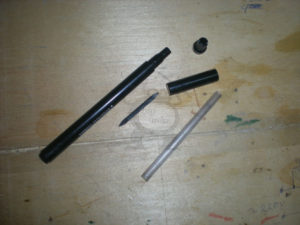The application of various liquids onto printed circuit boards or other surfaces can be made much more convenient using special devices. Despite the wide range of industrial tools and equipment available, manual work is still irreplaceable.
DIY Flux Dispenser Marker:
An expired marker or felt-tip pen, which used to be refilled with ink and alcohol, is now simply discarded as unnecessary, without considering that it can be repurposed as a container for something else. For instance, I made myself an excellent DIY flux dispenser marker using an F5 marker.
Well, ummm, in short… the name of the device speaks for the idea itself, and as they say, simplicity is genius. If you happen to have a couple of markers, felt-tip pens (I’m not sure, but… well, maybe even some fineliners and correction pens would work too), don’t rush to throw them away.
As a radio enthusiast, I am quite pleased with this little gadget and proudly share how to make a flux dispenser out of a regular marker:
First, take a marker or felt-tip pen (preferably an empty one) with an alcohol-based ink.

And completely disassemble it into its component parts. Naturally, it is better to do this wearing gloves and having a container of water nearby to immediately rinse it there.

Pay special attention to cleaning the marker’s nib. As for the ink-soaked fibers, you can simply discard them as I personally didn’t need them. Then, make sure to thoroughly dry all the marker parts.
Next, take ordinary cotton and stuff it into the transparent tube where the fibers were previously located, but leave a little space at one end of the tube.

Then simply take and saturate the cotton with the liquid you intend to apply (I poured flux into it). If you leave a little space, not completely stuffing the tube with cotton, the saturation process becomes much easier. Afterward, you need to reassemble the marker, putting everything back as it was. I also recommend sticking a label on the marker indicating what you filled it with.

Just wait a little while for the marker nib to absorb the flux, and then you can confidently apply it wherever you desire. From personal experience, I can say that this is a very convenient tool, especially when using active liquid fluxes. Such a container does not leak and is always at hand. You can apply the flux evenly and precisely, even in hard-to-reach areas.

